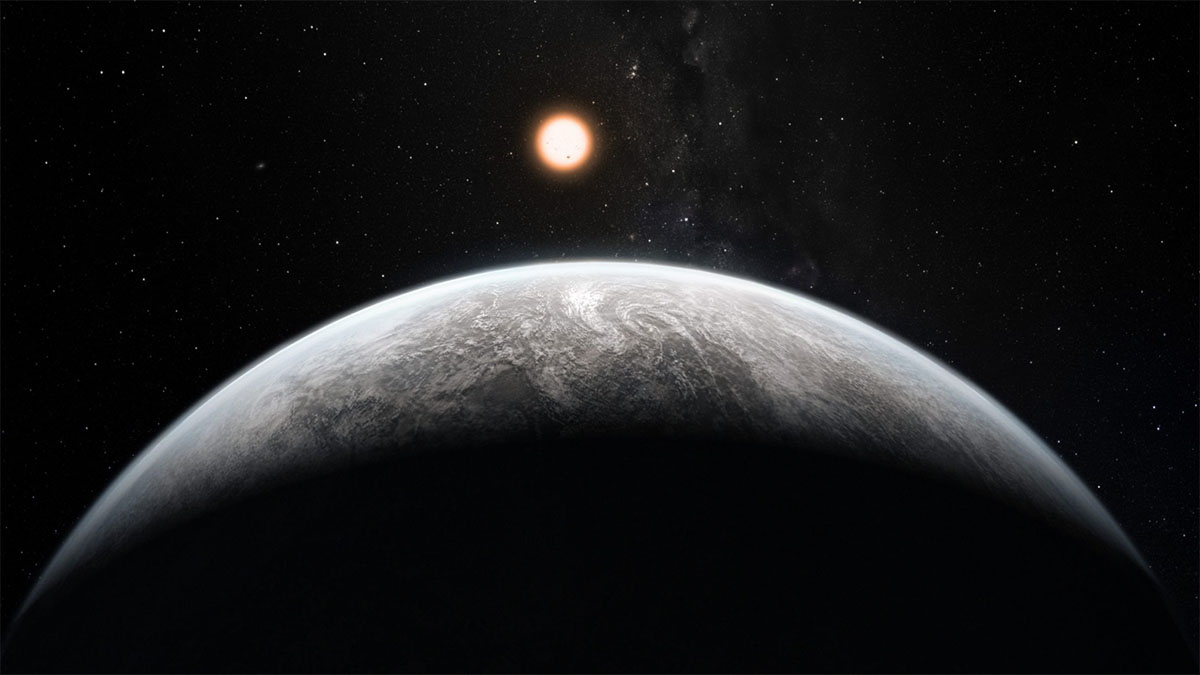kepler finds another candidate for alien eden

Whenever you tell someone that you have trouble believing in an omniscient, omnipresent, invisible deity who created the universe by its sheer will, but you’re certain that there is alien life elsewhere in the cosmos, oddly, you will get surprised stares. How can you believe that aliens are out there? No one has seen them so what evidence do you have that they might exist? Well, besides the fact that for an alien to exist would take far fewer leaps of logic and far fewer assumptions, it’s because we keep finding the chemistry of life floating in deep space in nebulae and asteroids, and the recent set of observations from our telescopes keep turning up the signals of potential places for alien life to exist. While the discovery of Gliese 581g might have turned out to be less than meets the eye at first, we now have a confirmed detection of a seemingly hospitable place for a biosphere, the terrestrial world of Kepler-22b. It orbits a Sun-like star every 290 days, placing it firmly into the habitable zone where temperatures should be ideal for liquid water given an atmosphere of the right density, and it’s only some 2.4 times bigger than Earth, firmly in the realm of the kind of planets we want to find.
Of course we still don’t know a lot of things about Kepler-22b. Without a good idea of its composition, we can’t say what its gravity is like or what gases float in its atmosphere. Plenty of oxygen would immediately signal an abundance of life there. but even if we don’t detect oxygen, it doesn’t mean that its lifeless. After all, oxygen is a toxic and corrosive gas which quickly breaks down without being steadily added into an atmosphere by biota, and we now know that life can thrive on other gases, including methane and carbon dioxide. Just as long as a liquid is present as a solvent, some form of self-perpetuating chemistry can arise and sustain itself. Because the planet is about 600 light years away, even if it has a glowing alien city covering half of its hemisphere, we wouldn’t be able to see it since all of Kepler-22b would be only a tiny smidgeon of a single pixel in our highest resolution images, and without an obvious flag like a significant amount of atmospheric oxygen or other hard to sustain gas, we’d never really know whether Kepler-22b hosts life or not without actually going there to find out firsthand. However, even knowing that such a planet actually exists and shows so much promise is quite thrilling in and of itself, especially knowing that it’s been detected directly three times, unlike Gliese 581g.
True, we shouldn’t imagine it as an alien Eden yet, but it’s hard not to get excited given what we know about it so far, especially given the fact that it’s not the only planet we know of close to or in its parent star’s habitable zone. In fact, SETI is now calibrating its telescopes to include Kepler data and trying to listen for any trace of artificial activity leaking into space from the most promising worlds in this growing planetary catalog. We have been dillgently trying to see if we’re not alone for the last century or so, and we’re now gaining the tools to take a much deeper and more thorough look at our stellar neighborhood to see if there’s anyone out there. It’s not an area of research we should take lightly and we should continue to look for alien life within our solar system as well, with Europa being one of the best candidates for an extraterrestrial biosphere. Knowing that we’re not a lonely spark of life in the cosmos for a fact may not change life as we know it nowadays, but maybe one day, it may help us to see ourselves not as citizens of countries competing for dominance, but as a single species living on a fragile little world, Sagan’s pale blue dot, a species which needs to look aim skyward and refuse to stay content with having a short lifespan and its feet planted firmly on the ground. Our distant ancestors were explorers and inventors, and we owe it to them to continue their legacy, not wallow in the mundane minutia of post-industrial life, trapped under the heel of bureaucrats bereft of any vision or sense of wonder.





